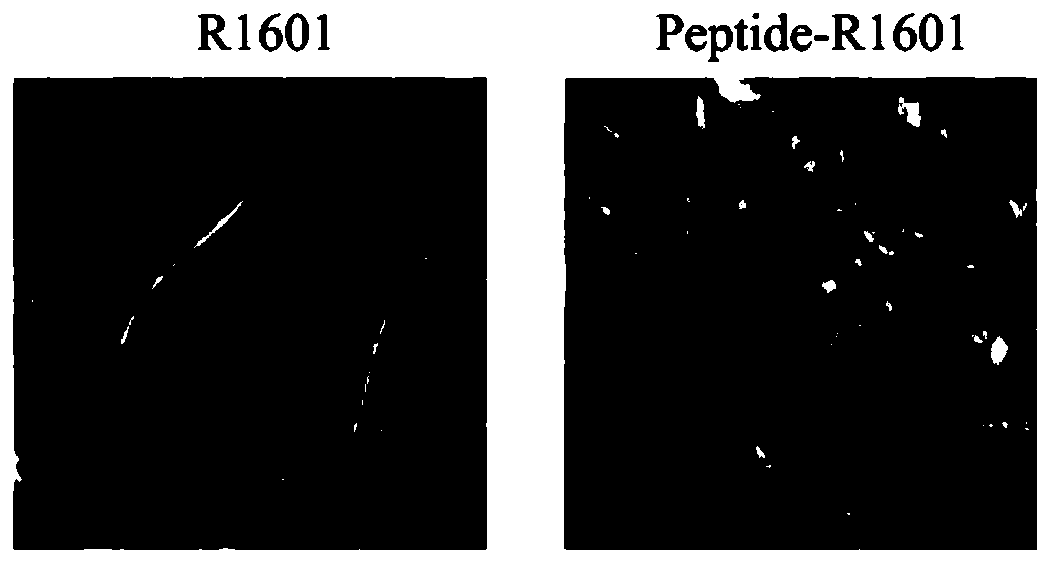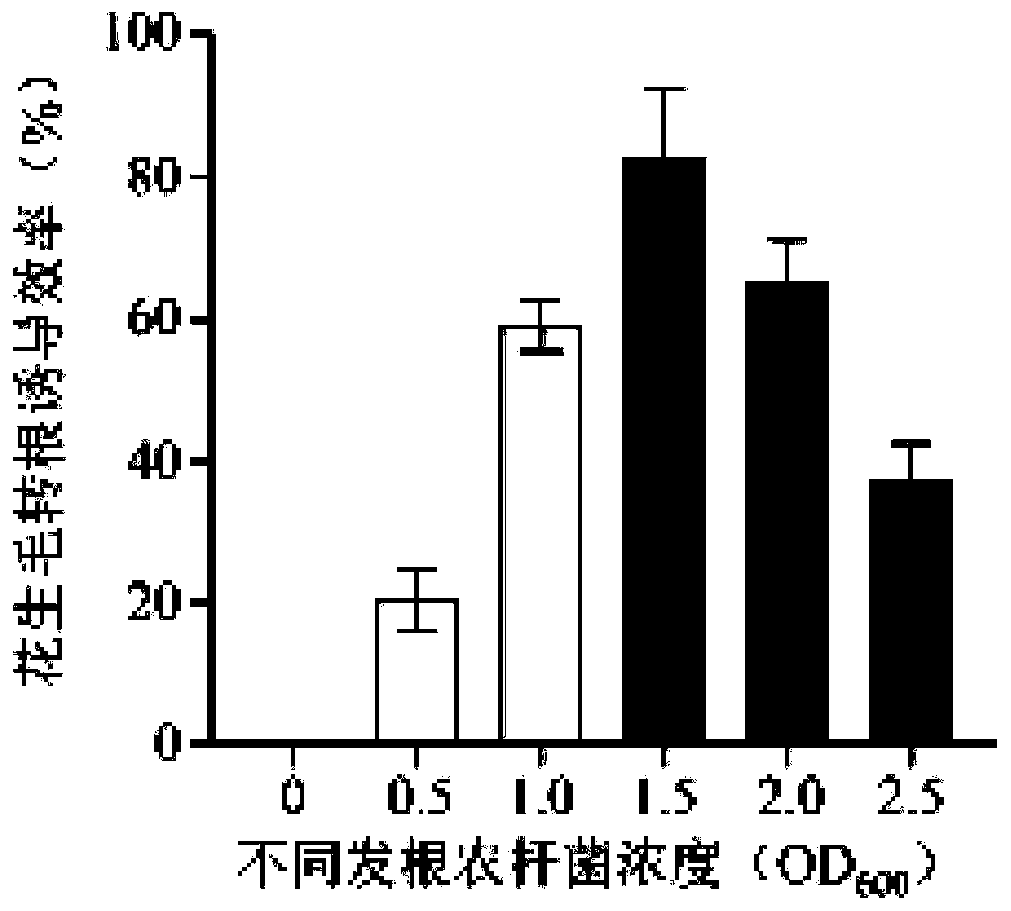Method for improving content of peanut secretory peptide of peanut hairy roots
A technology for secreting peptides and hairy roots, applied in the field of genetic engineering, can solve the problems of no biological activity of the product, high cost of chemical synthesis, uneven final yield, etc., and achieves less space utilization, good induction efficiency and low cost. Effect
- Summary
- Abstract
- Description
- Claims
- Application Information
AI Technical Summary
Problems solved by technology
Method used
Image
Examples
Embodiment 1
[0048] Example 1: Acquisition of Peanut Secreted Peptide Gene
[0049] (S1) Peanut RNA Extraction
[0050] Use Tiangen Plant Total RNA Extraction Kit (DP432) to extract the total RNA of peanuts, the specific steps are as follows:
[0051]S1-1: Take peanut seedlings that have grown for about 15 days and grind them fully in liquid nitrogen, add 400 μL of RL reagent in the kit for every 50-100 mg of tissue, vortex and oscillate to mix, and incubate at 56°C for 1-3 minutes to completely lyse the plant tissue;
[0052] S1-2: Transfer the solution in step S1-1 to the filter column CS (the filter column CS is placed in a collection tube), and centrifuge at 12,000 rpm for 5 min. Carefully pipette the supernatant from the collection tube into a new RNase-Free 1.5mL centrifuge tube with a tip with a part of the end cut off, and try to avoid contacting the cell debris in the collection tube with the tip;
[0053] S1-3: Slowly add 0.5 times the supernatant volume of absolute ethanol, mi...
Embodiment 2
[0063] Example 2: Peanut Secretory Peptide Gene Cloning and Vector Construction
[0064] The peanut cDNA obtained in Example 1 was used as a template for gene cloning and vector construction.
[0065] (P1) Target Peanut Peptide Gene Cloning
[0066] P1-1: Using peanut cDNA as a template, use Novizyme high-fidelity enzyme (2×Phanta Max Master Mix, p515) to amplify the target small peptide. The reaction system is: 2×Phanta Max Master Mix 12.5 μL, upstream primer 1 μL, 1 μL of downstream primers, 1 μL of cDNA template, and make up to 25 μL with water;
[0067] The PCR reaction system is: pre-denaturation at 95°C for 5 minutes, denaturation at 95°C for 25s, annealing at 55-60°C for 25s (according to the primer annealing temperature), extension at 72°C for 15-30s (according to the amplification length), 35 cycles, and post-extension at 72°C 5min;
[0068] P1-2: After the PCR reaction, perform agarose gel electrophoresis, cut the target band and perform gel recovery. The gel reco...
Embodiment 3
[0076] Embodiment 3: Induction of peanut hairy roots
[0077] The peptide-R1601 obtained in Example 2 was transformed into Agrobacterium rhizogenes to infect peanut leaves.
[0078] (M1) Peanut explant acquisition
[0079] The seeds of the peanut varieties to be tested (including 2 large peanut varieties HY25 Huayu No. 25, Luhua No. 11 and 2 small peanut varieties HY20 Huayu No. 20 and Luhua No. 12) were planted in pots in the artificial climate chamber (The diameter of the bottom is 36cm, and the height of the flowerpot is 26cm). The cultivation temperature is 28°C during the day, 25°C at night, 16h light / 8h darkness, and single peanuts are planted, 4 seeds per pot. Peanut seedlings grow to the stage of 3-6 compound leaves, and 2-4 compound leaves are selected from the bottom up as experimental materials. Rinse the peanut leaves with tap water for 10 minutes, wash them gently with sterile water for 2 minutes, soak them in 4% sodium hypochlorite solution for 2 minutes, and t...
PUM
 Login to View More
Login to View More Abstract
Description
Claims
Application Information
 Login to View More
Login to View More - R&D
- Intellectual Property
- Life Sciences
- Materials
- Tech Scout
- Unparalleled Data Quality
- Higher Quality Content
- 60% Fewer Hallucinations
Browse by: Latest US Patents, China's latest patents, Technical Efficacy Thesaurus, Application Domain, Technology Topic, Popular Technical Reports.
© 2025 PatSnap. All rights reserved.Legal|Privacy policy|Modern Slavery Act Transparency Statement|Sitemap|About US| Contact US: help@patsnap.com



